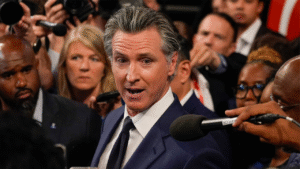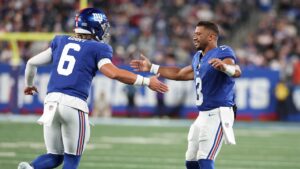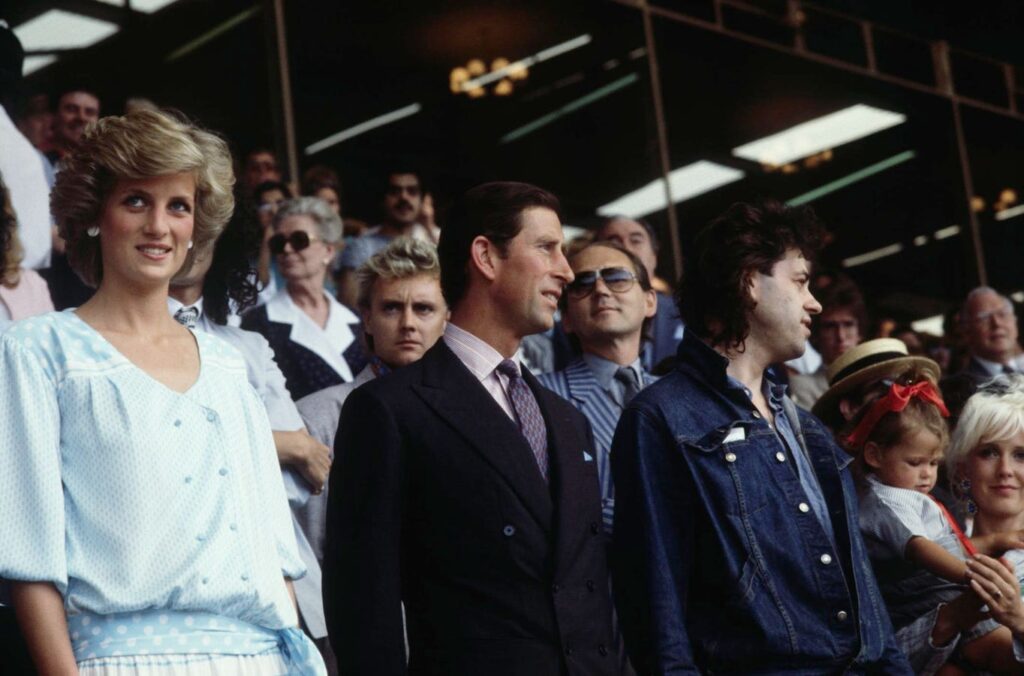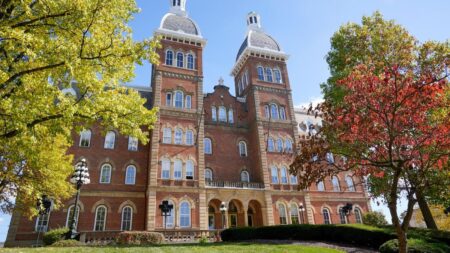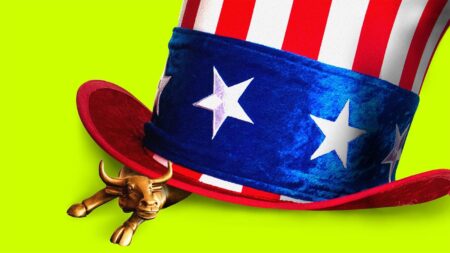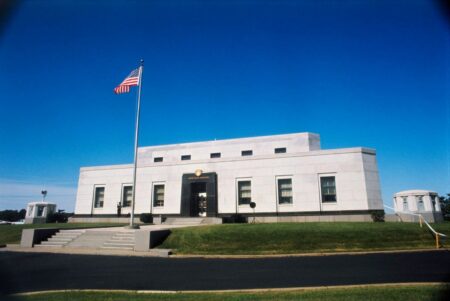Forty years ago, Prince Charles and Princess Diana officially opened Live Aid. They were royalty, to be sure, but pop royalty was waiting on stage at Wembley Stadium in London, too, to make history. That’s because Live Aid performers didn’t just play in London, but also just up the road from me at what was then John F. Kennedy Stadium in Philadelphia, Pennsylvania, resulting in a global phenomenon.
Live Aid was a “super concert,” featuring 16 hours of rock music in two venues linked by satellite, so that people at home could watch too. More than a billion viewers in 110 countries were said to have watched the concert—organizers claimed that more than 40% of the population tuned in with many dialing in to make donations. The benefit raised over $125 million for hunger relief aimed at Africa.
Famine And BandAid
In the 1980s, you couldn’t switch on a television or open a newspaper without hearing about the famines in Africa, specifically in Ethiopia. A perfect storm of drought and civil war (the longest of the 20th century) resulted in severe food shortages. By the mid-1980s, the hunger crisis in Ethiopia alone was thought to have resulted in over one million famine deaths, according to the United Nations.
The news made an impact. One of those who caught the 10-minute segment was Bob Geldof (now Sir Bob Geldof), of The Boomtown Rats, who felt that he needed to do something. His first thought? A charity record.
The result was Band Aid, a 1984 “super group” made up of such performers as U2’s Bono, Phil Collins, Boy George, Duran Duran’s Simon Le Bon, George Michael, Sting, and Jody Watley. The song that came from that first effort, “Do They Know It’s Christmas?” (admit it, it’s in your head now), became a hit, selling over two million copies and raising millions for charity.
Value-Added Tax
After Geldof had promised that every penny would go to famine relief, he received pushback from the British Government, which refused to waive the VAT (Value Added Tax, similar to our sales taxes) on sales of the single. The UK government had continued to collect from sales of the single, while the Irish government received nothing, having waived the tax so that all of the money would go to charity.
Britain’s Labour leader at the time, Neil Kinnock, asked that all VAT revenue raised on sales of the charity record be given to famine relief. Then-Prime Minister Margaret Thatcher responded by asking, “How, in fairness could we contribute the VAT raised on the Band Aid record to the fund-raising cause, but refuse it in all other cases?”
Geldof made a public stance against Thatcher in response. Later, the Prime Minister and Geldof became friends, even sharing a whiskey and a chat at No. 10. Thatcher also put famine relief on the G7 agenda, saying: “And we also find our pop stars under Bob Geldof’s leadership, converting their musical tribute into food and shelter for the hungry. I would like to add my personal thanks to all who contributed to that inspired piece of music-making.”
In 1985, the government agreed to make a donation to charity equivalent to the VAT collected on sales of the original 1984 Band Aid record.
USA For Africa
The single also struck a chord. The success of BandAid inspired USA For Africa, a similar movement in the United States. The song “We Are The World” was written by Michael Jackson and Lionel Richie and produced by Quincy Jones. The single, featuring solos by such luminaries as Ray Charles, Stevie Wonder, Tina Turner, Billy Joel, Willie Nelson, Bruce Springsteen and Cyndi Lauper, was released on March 7, 1985, and went on to sell more than 10 million copies.
Live Aid
Geldof later worked to merge the two together in one concert: Live Aid. Just a few months later, the global benefit became a reality.
The goal was to make it as big as possible, with performances in at least two venues. Performers in London included Elvis Costello, Dire Straits, David Bowie, Queen, Elton John (now Sir), George Michael, and Paul McCartney (also now Sir).
Performers in Philadelphia included Run DMC, Rick Springfield, Santana, The Cars, Patti LaBelle, Bob Dylan, Mick Jagger, Tina Turner—and, of course, a hometown favorite, the Hooters, a move that Geldof was reportedly not on board with. (Two of the biggest stars of the day opted out, including Michael Jackson and Bruce Springsteen, who was on his honeymoon.)
There were some iconic moments during the more than 16-hour long list of performances. Who can forget a young Bette Midler introducing an even younger Madonna in Philadelphia? Or Jack Nicholson introducing U2 as a band “who never has a problem expressing how they feel”? Or Phil Collins playing in London before jumping on Concorde to play drums in Philadelphia that same day with Led Zeppelin? Or Queen clearly making a statement that they weren’t done yet with a memorable rendition of “Radio Ga Ga”?
This all happened without the internet. Without email. Without cell phones. “Live streaming” was done by satellite to televisions.
And it worked.
The Money
Live Aid raised more than $125 million for famine relief (a 1986 article in Spin magazine suggested that not all of the money was used appropriately, an allegation that Geldof disputes). What is indisputable, however, is that the event contributed to an awareness of global poverty and hunger, forcing world leaders to address the issues in a public way.
Geldof continued to champion charitable causes, earning him a knighthood.
The concert also became a sort of template for perfecting future benefit concerts like Farm Aid (for American farmers), Live 8, and America: A Tribute to Heroes (for 9/11 relief).
Donating To Charity
Feeling inspired to donate money to your favorite cause? If you want to receive a tax deduction for your contribution, your donation must be made to a qualified organization. Those generally include religious organizations like churches, synagogues, temples, and mosques in the U.S., as well as domestic nonprofit schools and hospitals. It also includes what we typically think of as charitable organizations like the American Red Cross and the United Way.
An easy way to check charitable status is to click over to the Tax Exempt Organization Search Tool on the IRS website or call the IRS (toll-free) at 1.877.829.5500.
But before you send money abroad, remember that you are typically not allowed to claim a tax deduction for your contribution to a non-U.S.-based charitable organization, no matter how great the cause.
One way to provide aid in a foreign country while still qualifying for a deduction—and to ensure that you’re following those non-tax rules—is to donate to U.S.-based organizations that assist individuals in foreign countries. Donations to those U.S.-based organizations, such as the Red Cross, will normally qualify for charitable deductions even if they are providing services in foreign countries so long as they otherwise meet the rules as domestic tax-exempt charities.
You may still donate to non-U.S.-based charitable organizations. However, those donations are not considered tax-deductible charitable contributions—even if they are made to charitable organizations in the country where services are being performed.
And while it used to be the case that you needed to itemize to benefit from a charitable gift, under the One Big Beautiful Bill Act (OBBBA), taxpayers who do not itemize their deductions may still claim a deduction for contributions. Beginning in 2026, taxpayers who do not itemize can claim a deduction of up to $1,000 ($2,000 for those taxpayers who are married filing jointly) for certain charitable contributions.
The new law also creates a 0.5% floor on charitable contributions for taxpayers who itemize. A floor is a baseline that you have to exceed in order to benefit from the deduction (the medical expense deduction also has a floor). In this case, taxpayers who itemize can only deduct the amounts over 0.5% of their adjusted gross income (AGI). Here’s a quick example: Let’s say your AGI is $100,000 and you donated $1,500. You can deduct $1,000—that’s your $1,500 donation less the floor of $500 ($100,000 x .5%).
For more tips on making your charitable donations count, click here.
Read the full article here


